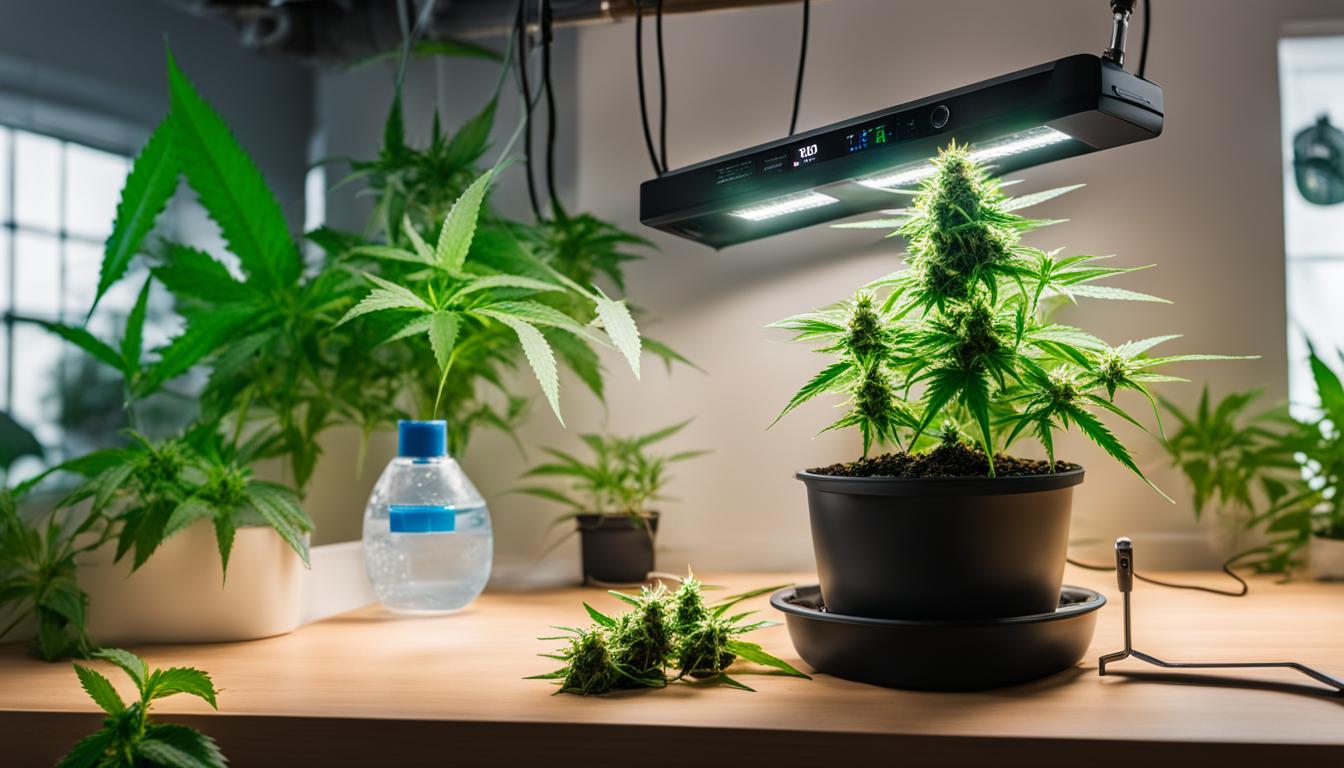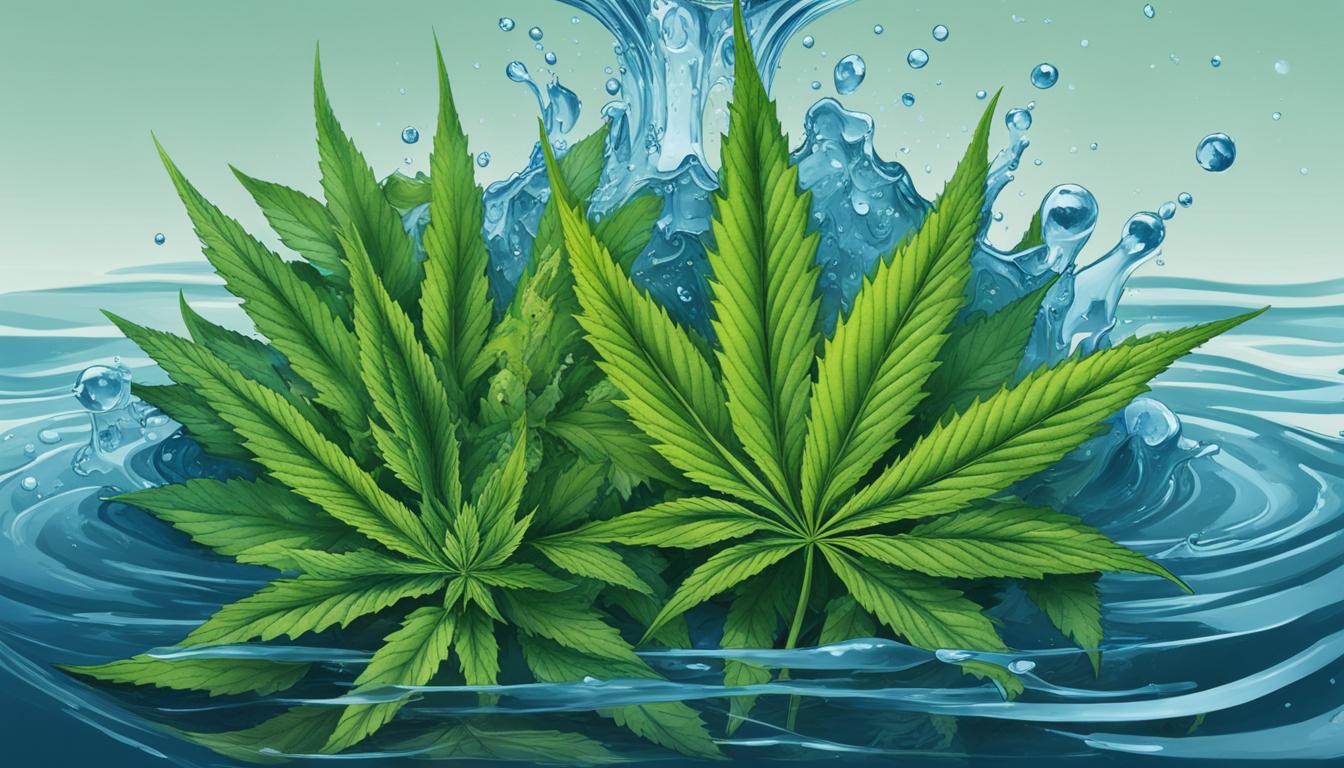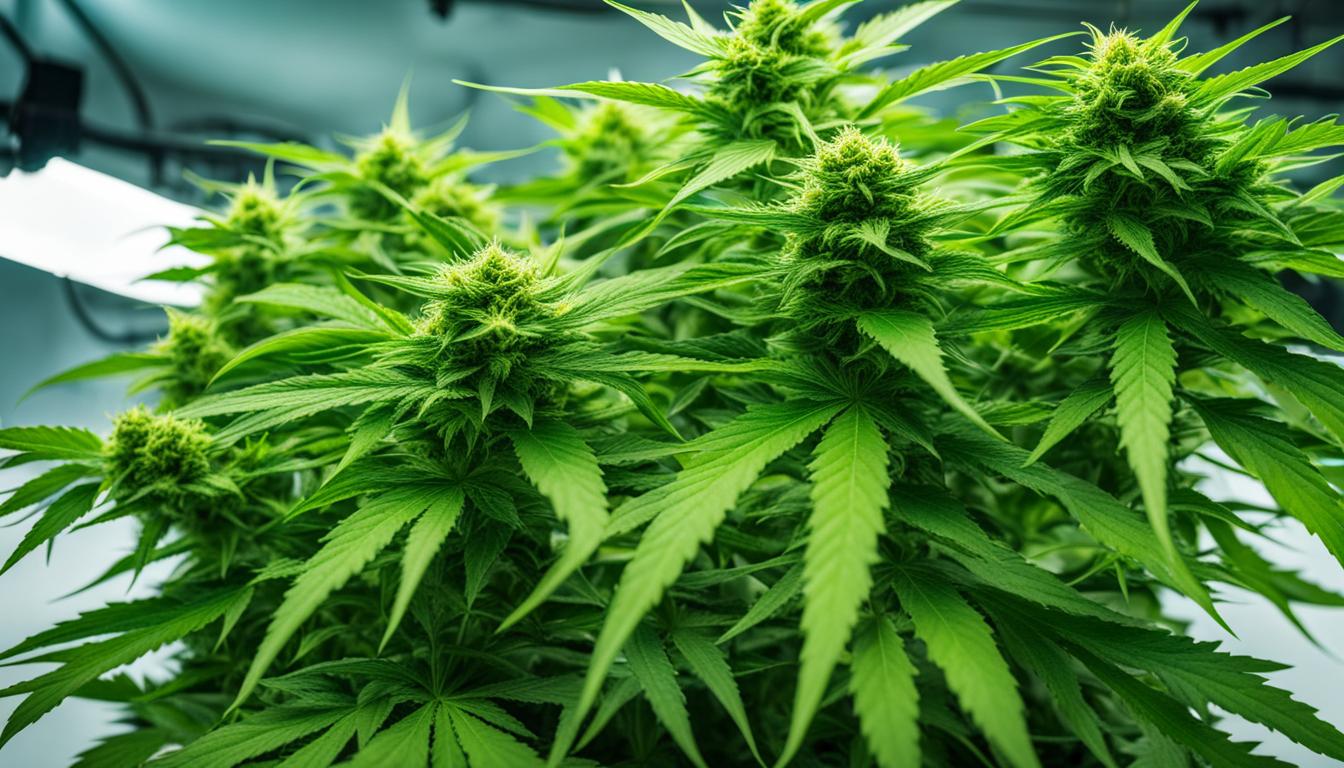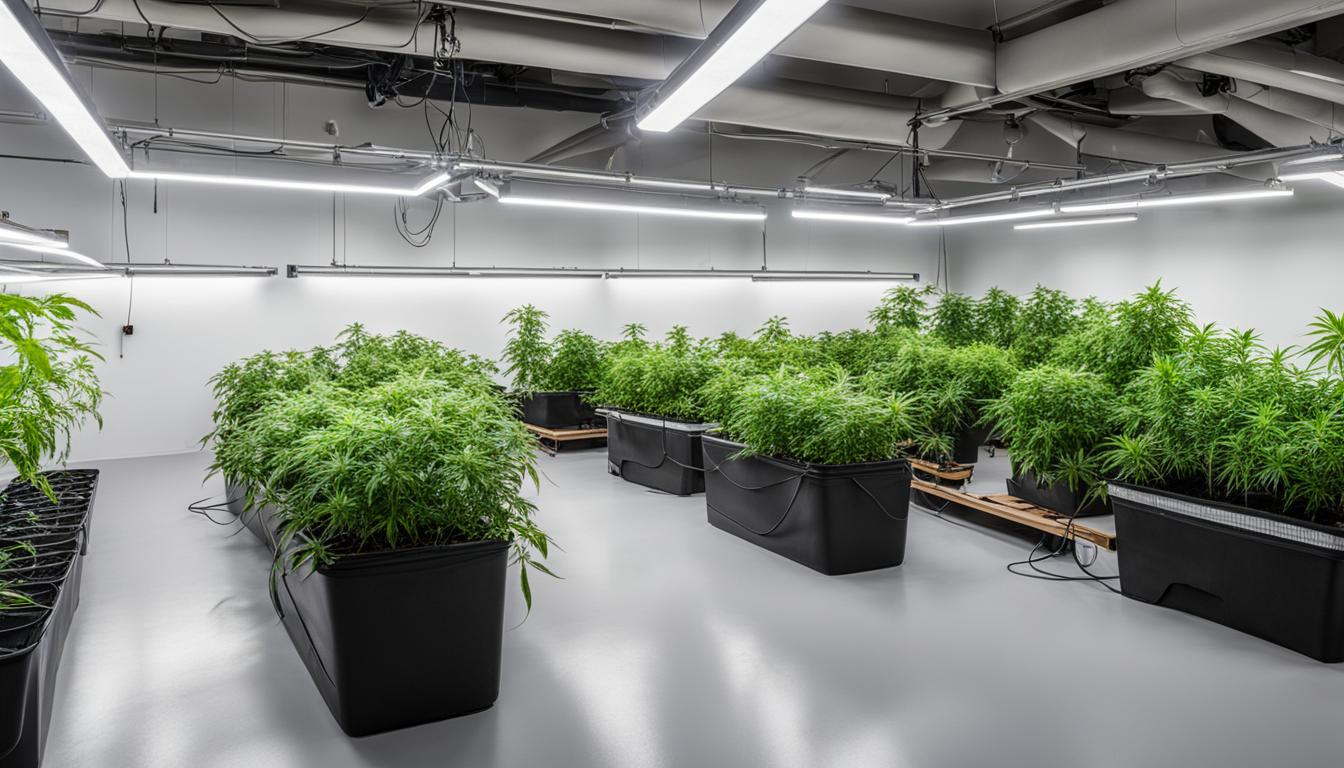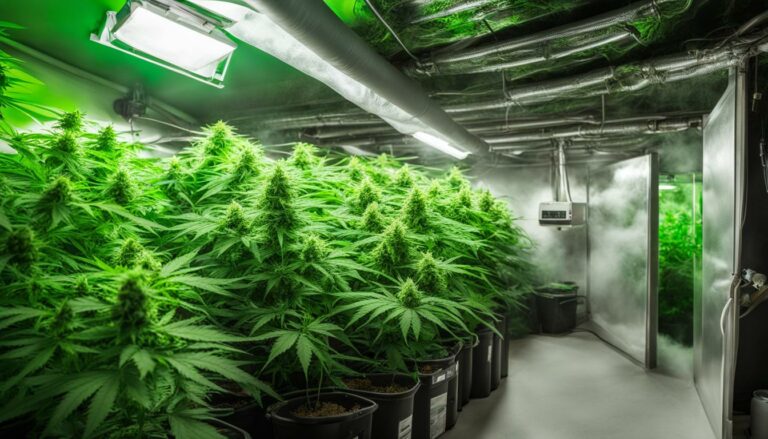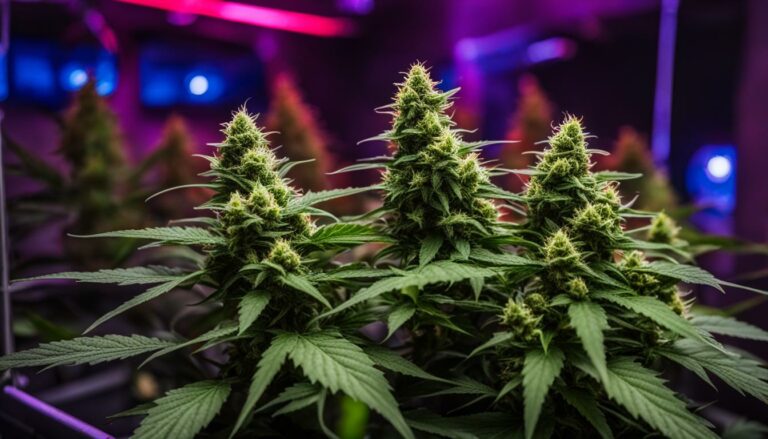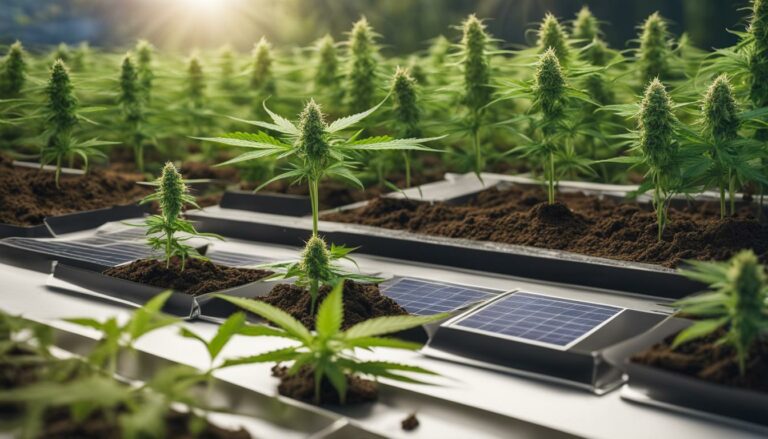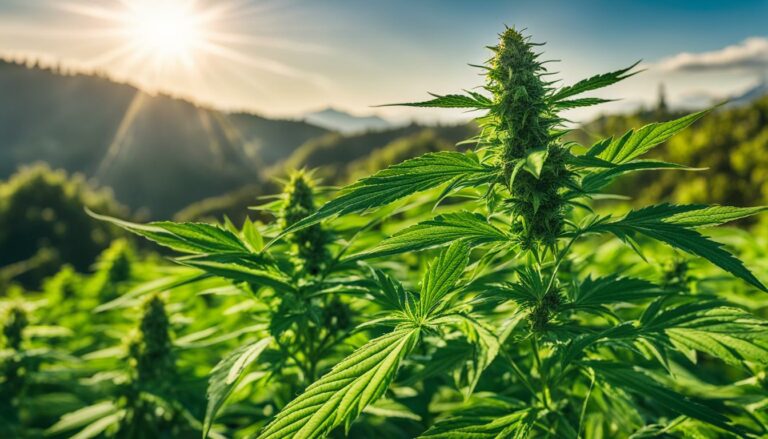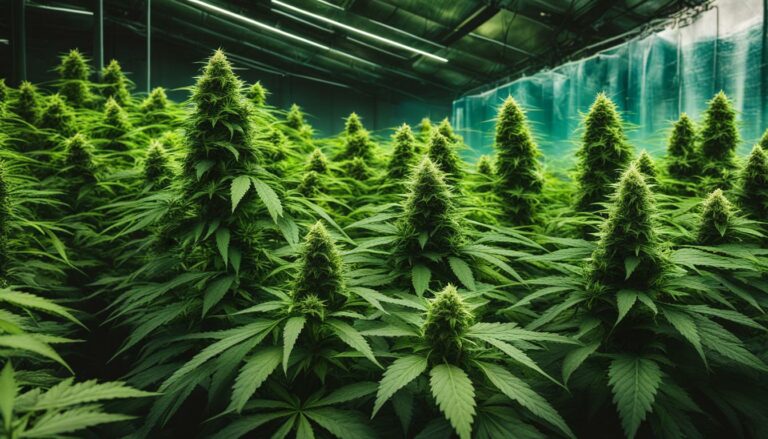Soil vs. Hydroponics: Which is Better for Cannabis?
Welcome to our in-depth exploration of the age-old debate between soil and hydroponics for growing cannabis. In this article, we will delve into the differences between these two cultivation methods, weigh their pros and cons, and ultimately help you decide which is the best approach for your cannabis garden.
As cannabis enthusiasts and cultivators, we understand the passion and opinions that surround this topic. Whether you’re a soil advocate or a hydroponics enthusiast, we aim to provide you with valuable insights to make an informed decision.
Throughout this article, we will cover the advantages and disadvantages of both soil and hydroponics, highlighting their unique features and potential benefits for your cannabis plants.
If you’re curious about the differences between these two methods, the ins and outs of hydroponic setups, or the challenges and rewards of growing cannabis in soil, you’ve come to the right place.
Let’s dive in and explore the fascinating world of soil versus hydroponics for cannabis cultivation.
The Advantage of Growing Cannabis Hydroponically
When it comes to cultivating cannabis, growing hydroponically offers distinct advantages over traditional soil-based methods. Hydroponics is a soilless method that involves growing plants in a nutrient-rich water solution, allowing for precise control over nutrient delivery and optimizing plant growth. Here are some key benefits of growing cannabis hydroponically:
- Enhanced Nutrient Uptake: In hydroponic setups, cannabis plants are directly supplied with nutrients, ensuring faster and more efficient absorption. This results in faster growth, increased yields, and healthier plants overall.
- Water Efficiency: Hydroponics systems are designed to recirculate and reuse water, significantly minimizing water consumption compared to traditional soil-based methods. This makes hydroponics a more sustainable and environmentally friendly option for cannabis cultivation.
- Precise Control: With hydroponics, growers have precise control over the nutrient solution, pH levels, and oxygen levels in the root zone. This level of control allows for optimal nutrient absorption, which can result in larger buds, higher cannabinoid content, and improved overall plant health.
In addition to these advantages, there is a wide range of hydroponic setups available, each with its own unique benefits and considerations. Recirculating hydroponic systems, for example, provide efficient nutrient delivery and are known for their water-saving capabilities. However, they require careful temperature maintenance and can be more prone to pathogens. Regardless of the chosen setup, hydroponics offers cannabis growers the opportunity to maximize plant potential and achieve exceptional results.
The Advantages of Hydroponic Setups
Hydroponic setups come in various forms, each offering specific advantages and considerations for cannabis cultivation. Let’s explore some popular hydroponic systems:
| Hydroponic Setup | Advantages |
|---|---|
| Deep Water Culture (DWC) | Simple design; efficient nutrient delivery |
| Ebb and Flow (Flood and Drain) | Flexibility in canopy management; simplicity of design |
| Aeroponics | Highly oxygenated roots; efficient nutrient uptake |
| Recirculating Drip System | Ability to use a wide variety of grow mediums; flexibility in environment control |
Each of these hydroponic systems has its own set of advantages and considerations, allowing growers to choose the setup that best suits their specific needs and preferences. Whether it’s the simplicity of Deep Water Culture, the flexibility of Ebb and Flow, the efficiency of Aeroponics, or the versatility of a Recirculating Drip System, hydroponics offers a range of options for successful cannabis cultivation.
Using Deep Water Culture to Grow Cannabis Hydroponically
Deep Water Culture (DWC) is a popular hydroponic setup for growing cannabis. It is known for its simplicity of design and its ability to provide direct access to nutrients, water, and oxygen for the roots of the plants. In a DWC system, cannabis plants are suspended in a reservoir of nutrient-rich water, allowing the roots to access the oxygen and nutrients they need for optimal growth.
One of the main advantages of using DWC for cannabis cultivation is its ease of use. The system consists of a container filled with nutrient solution, an air pump to provide oxygen to the roots, and a floating platform or net pot to hold the plants. This simple setup makes it an ideal choice for beginners or those who prefer a low-maintenance approach.
However, DWC also comes with its own set of challenges. The system requires large volumes of nutrient solution, which can be costly and require frequent monitoring and adjustments. Additionally, maintaining the proper temperature of the water can be difficult, as DWC systems tend to heat up quickly. Proper drainage is also crucial to prevent root rot and fungal diseases.
The Challenges of Deep Water Culture (DWC)
“DWC systems can be challenging to manage due to the large amount of water required and the potential for temperature fluctuations. Proper drainage and maintenance are key to successful DWC cultivation.”
To address some of these challenges, many growers opt for a re-circulatory DWC system (RDWC). In an RDWC system, multiple containers are interconnected, allowing for better nutrient distribution and increased oxygenation of the roots. This setup can help alleviate some of the temperature and nutrient imbalances that can occur in traditional DWC systems.
Despite its challenges, deep water culture remains a popular choice among cannabis growers. Its simplicity, direct nutrient delivery, and potential for high yields make it an attractive option for both beginners and experienced cultivators.
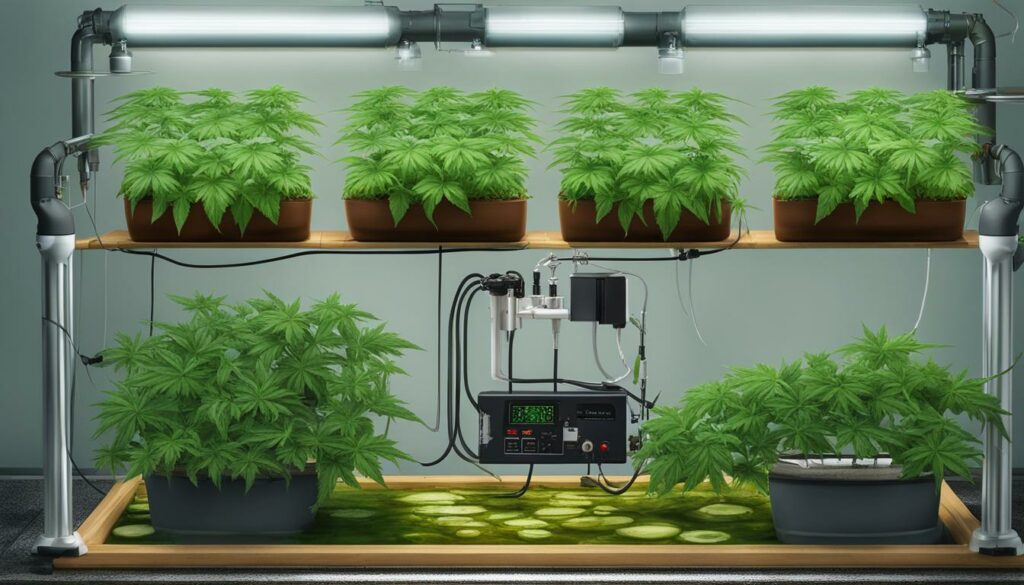
Table: Comparison of Deep Water Culture (DWC) and Re-circulatory DWC (RDWC) Systems
| Aspect | Deep Water Culture (DWC) | Re-circulatory DWC (RDWC) |
|---|---|---|
| Nutrient Distribution | Can be uneven | More even distribution |
| Oxygenation | Can be limited | Better oxygenation of roots |
| Temperature Control | Challenging | Improved temperature control |
| Yield Potential | High | Potentially higher with better nutrient distribution |
| Complexity | Simple | More complex setup |
Exploring the Ebb and Flow Option to Grow Cannabis Plants
When it comes to hydroponic systems for growing cannabis, the ebb and flow method, also known as flood and drain, offers a popular and effective approach. This system utilizes flood tables that periodically fill with nutrient-rich water and then drain, providing a cycle of hydration and aeration for the plants. It is a versatile system that allows for excellent canopy flexibility, making it easier to train and shape the plants.
One of the key advantages of the ebb and flow system is its simplicity of design. It involves a tray or table filled with a growing medium, such as clay pebbles or coco coir, where the cannabis plants are placed. The tray is then periodically flooded with nutrient solution, allowing the plants to absorb the necessary nutrients. The excess water is drained away, ensuring the roots have access to oxygen and preventing waterlogged conditions.
The use of flood tables in the ebb and flow system provides several benefits. Firstly, it allows growers to control the nutrient intake of their plants, ensuring they receive the right amount of food at appropriate intervals. Additionally, flood tables facilitate easy monitoring and adjustment of pH and nutrient levels. They also help to prevent water wastage by containing and recirculating the nutrient solution, promoting sustainability in cultivation practices.
| Advantages of Ebb and Flow Hydroponics |
|---|
| 1. Canopy flexibility for training and shaping plants |
| 2. Simple design and ease of use |
| 3. Control over nutrient intake and pH levels |
| 4. Recirculation of nutrient solution for sustainability |
The Pros and Cons of Aeroponics To Grow Cannabis Plants
Aeroponics is a fascinating and innovative method for growing cannabis plants. It involves suspending the roots in the air and delivering nutrient solution in the form of a fine mist. This unique approach offers several benefits, but it also comes with its fair share of drawbacks. Let’s dive into the pros and cons of using aeroponics to cultivate cannabis.
The Benefits of Aeroponics
- Aeroponics allows for efficient nutrient uptake, as the fine mist provides direct access to the roots. This results in faster growth and potentially higher yields.
- The highly oxygenated environment in aeroponic systems promotes healthy root development and reduces the risk of root diseases.
- Aeroponics offers precise control over nutrient delivery, allowing growers to fine-tune the feeding schedule and tailor nutrient solutions to the specific needs of the plants.
- This method requires less water compared to traditional soil cultivation, making it more water-efficient and environmentally friendly.
The Drawbacks of Aeroponics
- Aeroponic systems are more prone to mechanical failures, such as clogged misting nozzles or malfunctioning pumps. Regular maintenance and monitoring are crucial to prevent disruptions in the nutrient delivery system.
- The reliance on electricity to power the misting system makes aeroponics vulnerable to power outages. Backup power sources or alternative growing methods may be necessary to safeguard the crop.
- Aeroponics limits the flexibility of canopy management compared to other methods like hydroponics. Training techniques such as trellising or pruning may require adjustments to accommodate the suspended root system.
- There is a higher risk of introducing pathogens to the exposed roots in aeroponic systems. Strict sanitation protocols and proper disinfection practices are essential to prevent disease outbreaks.
Despite its challenges, aeroponics offers unique advantages for cannabis cultivation. It is a cutting-edge technique that allows for efficient nutrient uptake and promotes robust growth. However, growers must be mindful of the potential drawbacks and invest in proper maintenance and sanitation practices to ensure successful and healthy crops.
| Pros of Aeroponics | Cons of Aeroponics |
|---|---|
| Efficient nutrient uptake | Mechanical failures |
| Healthy root development | Vulnerability to power outages |
| Precise control over nutrient delivery | Limitations in canopy management |
| Water-efficient | Higher risk of pathogen introduction |
While aeroponics may not be suitable for every grower, it offers a unique and efficient way to cultivate cannabis plants. By weighing the pros and cons, you can make an informed decision and determine if aeroponics aligns with your growing goals and resources.
Pros and Cons of Recirculating Drip Systems for Growing Cannabis
Recirculating drip systems offer cannabis growers a versatile and efficient option for cultivating their plants. This method involves delivering nutrient-rich water to the plants through a network of drip lines and emitters, which allows for precise control over moisture and nutrient levels. When considering whether to use a recirculating drip system for cannabis cultivation, it’s important to weigh the pros and cons.
Pros of Recirculating Drip Systems
- Wide variety of grow mediums: One of the major advantages of recirculating drip systems is that they can accommodate a wide range of grow mediums. Whether you prefer soil, coco coir, perlite, or any other medium, a recirculating drip system can deliver the necessary water and nutrients for optimal plant growth.
- Flexibility in changing the growing environment: Recirculating drip systems allow growers to easily adjust the growing conditions to meet the specific needs of the plants. Whether you need to change the pH level of the nutrient solution or adjust the nutrient ratios, a recirculating drip system makes it easier to fine-tune the growing environment.
Cons of Recirculating Drip Systems
- Mechanical failures: Like any system, recirculating drip systems can experience mechanical failures. Drip lines and emitters may become clogged, pumps can malfunction, and leaks can occur. Regular maintenance and monitoring are crucial to prevent these issues and ensure the system functions properly.
- Clogging in drip lines and emitters: Another challenge with recirculating drip systems is the potential for clogging in the drip lines and emitters. Particles or sediment in the nutrient solution can accumulate over time, leading to reduced water flow and uneven distribution of nutrients. Regular flushing and cleaning of the system can help prevent clogs.
Despite these potential challenges, many cannabis growers find that recirculating drip systems offer a reliable and efficient way to cultivate their plants. With proper maintenance and attention to detail, a recirculating drip system can provide consistent and high-quality yields.
| Pros | Cons |
|---|---|
| Wide variety of grow mediums | Mechanical failures |
| Flexibility in changing the growing environment | Clogging in drip lines and emitters |
A recirculating drip system can provide cannabis growers with the flexibility to experiment with different grow mediums and adjust the growing environment to meet the specific needs of their plants. While mechanical failures and clogging can be potential drawbacks, proper maintenance and regular monitoring can help mitigate these issues.

“A recirculating drip system offers cannabis growers the ability to precisely control moisture and nutrient levels, providing an efficient and effective growing solution.” – Cannabis Cultivation Expert
Growing Cannabis in Soil
Growing cannabis in soil offers a range of options for cultivators, whether they choose to use true soil or a soilless medium. True soil, rich in organic matter and minerals, provides natural nutrients to the plants. On the other hand, soilless mediums such as pro mix or sunshine mix use peat moss and additives for aeration and pH control.
Amended soils, which have nutrients already incorporated, can be a convenient choice for beginner growers. However, they may sometimes suffer from nutrient imbalances, requiring careful monitoring and supplementation. Soilless mediums, on the other hand, allow for more control over nutrient supplementation, ensuring a balanced feed for the plants.
It is important to note that cannabis plants grown in soil require careful management of watering to prevent over or under-watering. Soil can retain water for longer periods, which can lead to root rot or nutrient lockouts if not properly managed. Regular monitoring of the soil moisture levels and an understanding of the specific needs of the cannabis strain being grown are crucial for successful cultivation in soil.
| Advantages of Growing Cannabis in Soil | Disadvantages of Growing Cannabis in Soil |
|---|---|
|
|
Soil vs Hydroponic Cannabis: Which Is More Potent?
The potency of cannabis has long been a subject of interest and debate among growers and consumers alike. Many factors influence the potency of cannabis, including genetics, growing conditions, and the cultivation method used. In this section, we will explore the comparison between soil-grown cannabis and hydroponically grown cannabis, specifically focusing on THC levels and overall potency.
When it comes to THC levels, studies have shown conflicting results between soil-grown and hydroponically grown cannabis. Some research suggests that hydroponics may lead to higher THC levels, as the precise control over nutrient delivery and environmental variables can optimize plant growth. On the other hand, soil-grown cannabis can produce a more diverse cannabinoid profile, including higher CBD levels, which may contribute to a different overall potency experience.
It’s important to note that THC levels alone do not determine the overall potency or quality of cannabis. The combination of cannabinoids, terpenes, and other compounds present in the plant play a significant role in influencing the effects and therapeutic potential of cannabis. The growing method, whether soil or hydroponics, can impact the overall cannabinoid profile, and therefore, the overall potency of the cannabis.
| Soil-Grown Cannabis | Hydroponically Grown Cannabis |
|---|---|
|
|
While hydroponic methods can potentially lead to higher THC levels, soil-based growing can produce a more diverse cannabinoid profile, including higher CBD levels.
Ultimately, the potency of cannabis depends on a combination of various factors beyond the cultivation method. Genetics, growing conditions, and post-harvest processing all contribute to the final product’s potency. Growers and consumers should consider their preferences and desired effects when choosing between soil-grown cannabis and hydroponically grown cannabis, as each method offers unique advantages and potential differences in potency.
Related Articles
- Soil vs. Hydroponics: Which Method Yields Higher Quality Cannabis?
- What Are the Cost Differences Between Soil and Hydroponic Cannabis Grows?
- How Does the Growing Medium Affect the Flavor Profile of Cannabis?
- Can You Combine Soil and Hydroponic Techniques for Growing Cannabis?
- What Are the Environmental Impacts of Soil vs. Hydroponic Cannabis Cultivation?
Conclusion
As you reach the end of this article, you have gained valuable insights into the ongoing debate of soil vs hydroponics for cannabis cultivation. Both methods have their merits and drawbacks, and your decision will depend on various factors.
When choosing the right method for cannabis cultivation, consider factors such as available resources, space, desired outcomes, and maintenance preferences. Soil-based cultivation offers a more natural approach, allowing for a diverse cannabinoid profile and potentially higher CBD levels. On the other hand, hydroponics provides precise control over nutrient delivery and may result in higher THC levels.
Ultimately, the choice between soil and hydroponics comes down to your personal preferences and goals as a grower. Whichever method you choose, with proper care and cultivation techniques, you can achieve healthy and abundant cannabis plants.
FAQ
What are the advantages of growing cannabis hydroponically?
Growing cannabis hydroponically allows for direct delivery of nutrients, water, and oxygen to the root zone of the plants. It offers efficient nutrient uptake, increased oxygenation of the roots, and flexibility in changing the growing environment.
How does the deep water culture (DWC) system work?
In a deep water culture system, cannabis roots are suspended in a nutrient-rich solution. This method is known for its simplicity, but it requires large volumes of nutrient solution and can be challenging to cool or drain.
What is the ebb and flow hydroponics system?
The ebb and flow system, also known as flood and drain, involves periodically flooding the growing medium with nutrient solution and then draining it. It offers simplicity of design and allows for more flexibility in arranging the canopy, but it requires a large amount of water and can be prone to leaks.
How does aeroponics work for growing cannabis?
Aeroponics is an extreme form of hydroponics where cannabis roots are suspended in the air, and nutrient solution is provided in an aerosolized form. It allows for efficient nutrient uptake and highly oxygenated roots, but it can be prone to mechanical failures, pathogen introduction, and limits canopy flexibility.
What are the pros and cons of recirculating drip systems?
Recirculating drip systems offer the advantage of using a wide variety of grow mediums and providing flexibility in changing the growing environment. However, they can be prone to mechanical failures and require precautions to prevent clogging in drip lines and emitters.
What are the options for growing cannabis in soil?
There are two options for growing cannabis in soil: true soil and soilless mediums. True soil relies on organic matter and minerals in the soil for nutrients, while soilless mediums use peat moss and additives for aeration and pH control. Amended soils have built-in nutrients, while soilless mediums allow for more control over nutrient supplementation.
Which method, soil or hydroponics, produces more potent cannabis?
The potency of cannabis depends on various factors beyond the growing method, including genetics and growing conditions. While hydroponic methods can potentially lead to higher THC levels, soil-based growing can produce a more diverse cannabinoid profile, including higher CBD levels.



